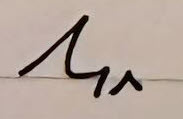LLTT Newsletter - November 2024
This edition highlights the importance of adaptable shorthand over rigid perfection in capturing critical conversations.

LLTT - November 2024
The Reed Writer: A Shorthand Tale
At a prominent London journalism school, where NCTJ gold standard shorthand was the make-or-break of many careers, two students developed markedly different approaches to their craft.
One wrote with unwavering precision, maintaining perfect Teeline accuracy as prescribed. Like a sturdy oak in a royal park, this writer stood resolute in their technique, never swaying from the guidelines.

The other wrote with remarkable fluidity, adapting their style to match each speaker's rhythm. Like a reed in the Thames, their outlines would bend and flow, sometimes straying from textbook perfection but never losing the thread of spoken words.

"Your outlines lack proper discipline," the rigid writer remarked during shorthand class. "They drift from the standard like a boat without anchor."
"Yet they capture every word of the Prime Minister's questions," the fluid writer replied. "And isn't that rather the point?"
Then came the day of the Select Committee hearing. MPs fired questions in rapid succession, witnesses spoke in varying accents and speeds, from measured civil service tones to rapid-fire responses under pressure. The committee chair hardly paused between speakers, and supplementary questions flew across the chamber.
The rigid writer struggled to maintain their perfect outlines against this barrage of parliamentary discourse. Each time they attempted to craft a pristine note, vital words from interjecting committee members went unrecorded, their perfect technique finally buckling under the pressure of reality.
But the fluid writer moved like a reed in the wind, adapting to each new voice, every change of pace. Their outlines weren't always textbook examples, but they flowed naturally with the speech, bending but never breaking, capturing every crucial exchange.
When the time came to file their copy, the rigid writer found gaps where their perfect technique had failed them at critical moments. But the fluid writer had captured everything, their adaptable style proving more robust than unbending perfection.
From that day forward, students at the college learned that in Teeline, as in nature, those who adapt survive better than those who remain rigid. The true strength of shorthand lies not in unwavering perfection, but in its ability to flow with the ceaseless current of speech.
The tale still circulates in newsrooms from Fleet Street to the regional dailies: when the story breaks, when the court rises, when parliament divides, it's not the perfect outline that matters - it's the one that gets the quote right.
The moral of this story is:
The world doesn't need perfect shorthand, but it does need shorthand that works.
This is a simple truth that lies at the heart of every successful shorthand writer's journey. While perfection tempts many, it's utility that changes lives, captures history, and serves justice.
In courtrooms, the participants don’t pause while the reporter forms perfect strokes. In newsrooms, the source doesn't wait while the reporter crafts flawless outlines. During an interview, people don’t slow down so someone can remember a choice word grouping.
The world moves at its own pace, and your shorthand must keep up.
Working shorthand isn't about elegance, rather, its ability to capture reality as it unfolds. It's about the quick, efficient transfer of the “spoken word to written symbol.” The true measure of shorthand isn't found in a textbook or in drill sheets – it's found in the moments when words flow fast and time is short.
More often than not, words come quickly, one after another. There's no time to remember “rules” or contemplate which outline is best.
There's only time to write, to capture, to record.
In these moments, shorthand that works is shorthand that flows without conscious thought, without hesitation and without the burden of perfection.
This isn't an excuse for sloppiness or a rejection of proper technique. Rather, it's a recognition that shorthand's purpose is practical, not aesthetic. The goal isn't to create art – it's to capture reality.
In the end, the best shorthand is the shorthand that gets the job done, that serves its purpose, that works when it matters most.
Every stroke needn't be perfect, but every word must be there. Every outline needn't be beautiful, but it must be readable. Every page needn't be a masterpiece, but it must tell the true story of what was said.
The world needs shorthand that can capture the testimony that ensures justice, records the speech that changes history, documents the meetings that launch new ventures, and preserves the integrity of an interview that breaks the story.
It needs shorthand that works; reliable, efficient, practical Teeline that serves its purpose without fail.

Out there, the world doesn’t need perfect shorthand, but it does need shorthand that works.
Make it work for you.

In a long forgotten book
Listen well, young scribes. Your shorthand is not merely a collection of strokes upon a page, but a living extension of your own mind and hand. Just as no two snowflakes share the same pattern, no two writers share precisely the same path to mastery. The wise scribe does not blindly accept what troubles them, but becomes a scientist in their own laboratory of learning. Keep vigil over your struggles, for they are your greatest teachers. When an outline repeatedly betrays your speed, when your pen hesitates at familiar crossroads – these are not failures, but signposts pointing toward the path of improvement. Each week, study these challenging marks as a gardener studies the soil. Some require only the water of practice to flourish, while others may need replanting with outlines better suited to their hand's natural flow. Remember, young ones: the masters of old did not achieve their swiftness through stubborn adherence to what did not serve them, but through careful observation and thoughtful adaptation of their craft. Be both a student and teacher of your own hand. For in the end, it is not the outlines in a book that matter, but the one that flows like water from your pen when speed is of the essence. Now go forth and observe your struggles with curiosity, for within them lies the seed of your mastery.

Be sure to visit us at the LLTT Website, YouTube, Facebook, Instagram, Quizlet and Soundcloud.
If you’re looking for Teeline reading practice, Skill Building Through Reading 📗 - is available for purchase online.
Much work (and ❤️!) has gone into this 48 page, 6”x9" softcover book:
Five 5️⃣ carefully selected passages: Improve your sight 👁️ recognition of outlines and word groupings.
Dual Format: Each passage includes both printed Teeline and the longhand ✍️ transcription.
Proven Learning Approach: Reading printed 🖨️ shorthand is a method long-favoured by skilled practitioners.
Whether you're a student, journalist, or professional seeking to improve your note taking, this book will be a valuable addition to your Teeline learning resources.
To order, please visit the book’s landing page or respond to this email with any questions.
If you find this newsletter helpful, please help us spread the word and forward to a friend!
A Parting Thought

"Don't Get Worried. Don't Get Stressed. Let's Love Teeline Together."

Add a comment: